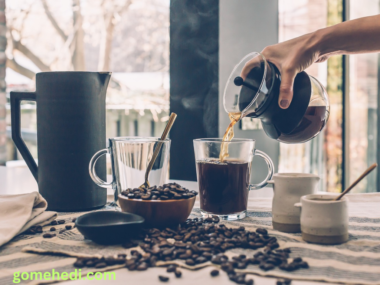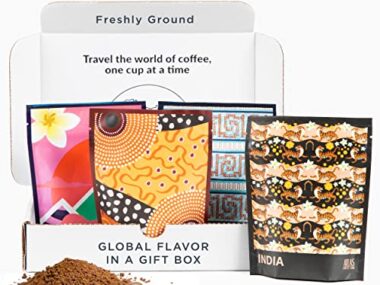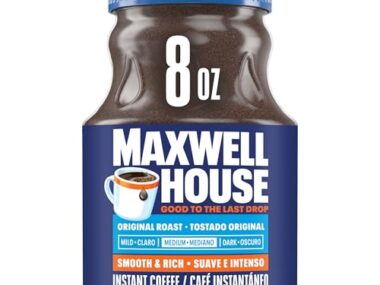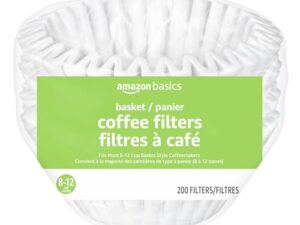Imagine waking up to the aroma of freshly brewed coffee, its rich scent filling the air and promising a moment of pure bliss. Coffee isn’t just a beverage; it’s an experience, a ritual that starts your day and energizes your soul.
But with so many types of coffee out there, how do you know which one is the tastiest? That’s exactly what we’re diving into today. You’ll discover the secrets behind different coffee types and what makes each unique, guiding you towards your perfect cup.
Whether you’re a seasoned coffee lover or new to the world of java, this article will tantalize your taste buds and help you find your ultimate brew. Keep reading to unlock the flavors that will transform your coffee moments from ordinary to extraordinary.

Credit: www.freepik.com
Types Of Coffee Beans
Coffee is loved worldwide for its rich flavors and aromas. Many people ask about the tastiest type of coffee. The answer depends on personal taste and the type of coffee beans used. Different beans have unique flavors and characteristics. Understanding these can help you find your favorite cup of coffee. Let’s explore some popular types of coffee beans.
Arabica
Arabica beans are the most popular coffee beans globally. They make up about 60% of the world’s coffee production. These beans are known for their smooth, mild taste. They have a rich flavor with a hint of sweetness and a bit of acidity. Arabica beans are grown in high-altitude regions. They require specific climate conditions to thrive. The beans are often used in specialty and gourmet coffees.
-
Flavor Profile: Smooth, sweet, with fruity and nutty notes.
-
Growing Regions: Brazil, Colombia, Ethiopia, and other high-altitude areas.
-
Popularity: Most consumed coffee bean worldwide.
These beans are delicate and require careful handling. They are often more expensive than other types due to their quality. Arabica coffee is perfect for those who enjoy a gentle and sophisticated cup of coffee.
Robusta
Robusta beans are the second most popular type of coffee beans. They are known for their strong, bold flavor. These beans have a higher caffeine content than Arabica. This gives them a more bitter taste. The beans are easier to grow as they are more resistant to diseases. They thrive in lower-altitude regions.
-
Flavor Profile: Strong, bold, with a bitter finish.
-
Growing Regions: Vietnam, Indonesia, and parts of Africa.
-
Caffeine Content: Higher than Arabica, providing a stronger kick.
Robusta beans are often used in espresso blends and instant coffee. They are cheaper than Arabica due to ease of cultivation. Ideal for those who like a strong, intense coffee experience.
Liberica
Liberica beans are unique and rare in the coffee world. They are known for their distinctive, complex flavors. The beans have a floral and fruity aroma, with a smoky taste. Liberica is grown mainly in the Philippines and Malaysia. It’s not as widely available as Arabica or Robusta.
-
Flavor Profile: Floral, fruity, with a smoky, woody taste.
-
Growing Regions: Philippines, Malaysia, and some parts of Africa.
-
Rarity: Less common, offering a unique coffee experience.
These beans are larger and more irregular in shape. They provide an exotic taste adventure for coffee enthusiasts. Liberica is perfect for those seeking something different from the usual coffee flavors.
Excelsa
Excelsa beans are a lesser-known variety of coffee beans. They are famous for their tart, fruity flavors. The beans have a unique taste that combines light roasts’ characteristics with dark roasts’ depth. Excelsa is primarily grown in Southeast Asia.
-
Flavor Profile: Tart, fruity, with a unique blend of light and dark notes.
-
Growing Regions: Southeast Asia, particularly Vietnam and the Philippines.
-
Use in Blends: Adds complexity and depth to coffee blends.
Excelsa beans are often used to enhance the flavor profile of blends. They add complexity and depth to the coffee. This bean is ideal for those who appreciate a complex, layered taste in their coffee.
Brewing Methods
The world of coffee is diverse and delightful. Each brewing method brings a unique flavor to your cup. Some people love a strong shot, while others prefer a smooth sip. The tastiest coffee depends on personal taste and the method used. Let’s explore different brewing methods and see what makes each special.
Espresso
Espresso is a favorite for many coffee lovers. It’s bold and intense. Made by forcing hot water through finely-ground coffee. The result? A small, concentrated shot. This method enhances the coffee’s natural flavors. It’s quick to prepare and packs a punch. Perfect for those who love a strong start to their day.
Espresso is versatile. It’s the base for many coffee drinks. Like lattes, cappuccinos, and macchiatos. Here are some key points about espresso:
-
Rich flavor: Packed with taste.
-
Small serving: Usually 1-2 ounces.
-
Quick brew: Ready in seconds.
An espresso machine is essential for this method. It requires precise pressure and temperature. The grind of the coffee should be fine. This ensures the best extraction. Espresso is not just a drink. It’s an experience.
French Press
The French Press method offers a full-bodied cup. It’s simple and doesn’t need electricity. You brew coffee by steeping grounds in hot water. Then, you press the grounds with a plunger. This method highlights the coffee’s oils and flavors. It’s a favorite for those who love rich and robust coffee.
Making French Press coffee involves patience. Letting the coffee steep for about four minutes. This allows the flavors to develop. Here are some advantages of French Press:
-
Deep flavor: Extracts coffee oils well.
-
Easy to use: No machines needed.
-
Control: Adjust steeping time for taste.
The French Press gives you control over the coffee strength. Use coarsely ground coffee for best results. It’s great for sharing with friends. Enjoy a leisurely coffee break with this method.
Pour Over
Pour Over coffee is elegant and simple. It involves pouring hot water over coffee grounds. The water passes through the grounds slowly. Extracting flavors gently and evenly. This method is popular for its clean and bright taste. Ideal for those who appreciate a smooth cup.
Pour Over requires careful attention. Using a filter and a dripper. Here are some benefits:
-
Bright flavor: Highlights subtle notes.
-
Precision: Control water flow and temperature.
-
Clear cup: Minimal oil and sediment.
It’s perfect for single servings. Use medium to fine ground coffee. The Pour Over method is a calming ritual. Take your time and enjoy the aroma. It’s about the journey, not just the destination.
Cold Brew
Cold Brew coffee is smooth and refreshing. It’s brewed without heat. Steeping coarse coffee grounds in cold water. This process takes 12-24 hours. The result is a coffee that’s less acidic. Perfect for hot days or gentle mornings.
Cold Brew is easy to make and store. It can be kept in the fridge for up to two weeks. Here are some reasons to love Cold Brew:
-
Mellow taste: Low acidity.
-
Versatile: Enjoy cold or iced.
-
Long shelf life: Store for days.
This method is forgiving. You can experiment with flavors. Try adding vanilla or cinnamon. Cold Brew is a modern favorite. It’s coffee without the rush. Sip and savor each moment.
Flavors And Aromas
Coffee is a beloved beverage worldwide. Its vast array of flavors and aromas captivates enthusiasts. Different types of coffee offer unique tastes. Some are fruity, while others have nutty, chocolate, or spicy notes. Discovering the tastiest type of coffee depends on personal preference. Dive into the delightful world of coffee flavors to find your favorite.
Fruity Notes
Fruity notes in coffee offer a refreshing twist. These coffees often have hints of berries, citrus, or stone fruits. Ethiopian and Kenyan coffees are known for their fruity profiles. They often boast a bright acidity and sweetness. Here are some common fruity notes found in coffee:
-
Berry: Strawberry, raspberry, and blueberry.
-
Citrus: Lemon, orange, and grapefruit.
-
Stone Fruits: Peach, apricot, and plum.
Fruity coffees are often enjoyed by those who like light and refreshing flavors. They can be a great choice for iced coffee or cold brew. The natural sweetness in these coffees makes them popular among those who prefer less bitterness.
Nutty Undertones
Nutty undertones in coffee provide a rich and comforting experience. These flavors can range from almond to walnut or hazelnut. Brazilian and Colombian coffees often exhibit nutty characteristics. Here are some common nutty notes in coffee:
-
Almond: Smooth and sweet.
-
Walnut: Earthy and bold.
-
Hazelnut: Creamy and rich.
Nutty coffees are perfect for those who enjoy warm and cozy flavors. They pair well with milk or cream, enhancing their richness. These coffees are often chosen by those who like a balanced and full-bodied cup.
Chocolate Flavors
Chocolate flavors in coffee offer a decadent and indulgent taste. These coffees can have hints of milk, dark, or cocoa-like chocolate. Costa Rican and Guatemalan coffees are known for their chocolatey profiles. Here are some common chocolate flavors found in coffee:
-
Milk Chocolate: Sweet and creamy.
-
Dark Chocolate: Bitter and intense.
-
Cocoa: Smooth and deep.
Chocolate-flavored coffees are favored by those who love rich and comforting tastes. They work well in espresso-based drinks like lattes and cappuccinos. The luxurious flavor makes them a delightful treat for any coffee lover.
Spicy Accents
Spicy accents in coffee add an exciting twist to your cup. These flavors can include cinnamon, clove, or black pepper. Sumatran and Indian coffees often exhibit spicy notes. Here are some common spicy flavors found in coffee:
-
Cinnamon: Sweet and warming.
-
Clove: Bold and aromatic.
-
Black Pepper: Pungent and spicy.
Spicy coffees are ideal for those who enjoy bold and intriguing flavors. They are often paired with sweet pastries or desserts. The unique and vibrant taste makes them a favorite for adventurous coffee drinkers.
Regional Varieties
Exploring the world of coffee is a journey through diverse flavors and aromas. Each region offers a unique taste profile, shaped by its climate, soil, and coffee-making traditions. From fruity and floral notes to deep, earthy flavors, regional varieties of coffee provide a rich tapestry of tastes for coffee lovers to enjoy. Discovering which type is the tastiest is a delightful pursuit, inviting enthusiasts to savor the distinct characteristics of each brew.
Ethiopian Coffee
Ethiopian coffee is often celebrated as the birthplace of coffee. Its flavors are distinct and memorable. Complex and vibrant are words commonly used to describe Ethiopian coffee. Many varieties offer floral and fruity notes that captivate the senses. The coffee is often grown in the highlands, where the cooler climate contributes to its unique taste.
Here are some common Ethiopian coffee characteristics:
-
Fruity flavors, such as berry and citrus.
-
Floral aromas that enhance the coffee experience.
-
Wine-like acidity that adds a refreshing quality.
These flavors make Ethiopian coffee a favorite among those who appreciate bright and lively coffee experiences. It’s often brewed using traditional methods, which highlight its natural flavors.
Colombian Coffee
Colombian coffee is known for its smooth and balanced flavor. The country’s diverse geography, with its mountains and rich soil, provides perfect conditions for growing coffee. Colombian coffee tends to have a medium body and rich flavor that appeals to many.
Typical characteristics of Colombian coffee include:
-
Nutty undertones that give depth to the taste.
-
Caramel sweetness that complements the nutty flavors.
-
Balanced acidity making it easy to enjoy.
Colombian coffee is versatile, often used in blends to enhance flavor profiles. Its well-rounded taste makes it a popular choice for coffee enthusiasts worldwide.
Jamaican Blue Mountain
Jamaican Blue Mountain coffee is considered a luxury in the coffee world. It is grown at high altitudes in the Blue Mountains of Jamaica. This coffee is prized for its smooth and mild flavor. The unique growing conditions contribute to its distinct taste.
Key features of Jamaican Blue Mountain coffee include:
-
Mild and smooth with low acidity.
-
Subtle nutty notes that add complexity.
-
Sweet and creamy finish.
Jamaican Blue Mountain coffee is often sought after for its exceptional quality. Its rarity and unique taste profile make it a special treat for coffee lovers.
Sumatra Coffee
Sumatra coffee offers a bold and earthy flavor profile. The coffee is grown in the volcanic soil of Indonesia, which enriches its taste. Sumatra coffee is known for its full body and distinctive flavors.
Characteristics of Sumatra coffee include:
-
Earthy tones that provide a deep flavor.
-
Herbal notes that add complexity.
-
Low acidity for a smooth drink.
The unique processing methods in Sumatra enhance its rich and bold flavors. Sumatra coffee is ideal for those who enjoy a strong, aromatic cup.
Popular Coffee Drinks
Coffee is a beloved beverage around the world. It comes in many flavors and styles. Each type has its own unique taste and preparation method. Many people wonder which is the tastiest type of coffee. It’s a question with no easy answer. Tastes vary from person to person. Popular coffee drinks include the Latte, Cappuccino, Americano, and Mocha. Each offers a distinct flavor profile. Let’s explore these popular choices to see what makes each one special.
Latte
The Latte is a favorite among coffee lovers. It is smooth and creamy. A Latte is made with espresso and steamed milk. The milk is what gives it a rich texture. It has a mild coffee flavor, making it perfect for those who prefer less bitterness.
-
Contains espresso and steamed milk
-
Creamy and rich texture
-
Mild coffee flavor
Many people enjoy adding flavors to their Lattes. Popular choices include vanilla, caramel, and hazelnut. This adds a sweet touch to the drink. Lattes are often served in large cups. They can be enjoyed hot or iced, making them versatile. A Latte is a comforting choice for any time of day.
Cappuccino
The Cappuccino is known for its frothy top. It is similar to a Latte but has a stronger coffee taste. A Cappuccino is made with equal parts of espresso, steamed milk, and milk foam. The foam creates a light and airy texture.
|
Component |
Proportion |
|---|---|
|
Espresso |
1/3 |
|
Steamed Milk |
1/3 |
|
Milk Foam |
1/3 |
Some sprinkle cocoa or cinnamon on top. This adds a hint of sweetness. The Cappuccino is perfect for those who enjoy a stronger coffee flavor. It is often served in smaller cups, so each sip is rich and satisfying.
Americano
The Americano is simple yet bold. It is made by adding hot water to espresso. This method creates a coffee that is similar to traditional drip coffee. The flavor is strong and straightforward.
-
Contains espresso and hot water
-
Strong coffee flavor
-
Similar to drip coffee
An Americano is ideal for those who love pure coffee taste. It is less intense than straight espresso but still rich. Many enjoy it black, but milk or sugar can be added. The Americano is a classic choice for coffee enthusiasts.
Mocha
The Mocha is a delightful blend of coffee and chocolate. It combines espresso, steamed milk, and chocolate syrup. The result is a sweet and creamy coffee drink. The chocolate adds a rich and decadent flavor.
-
Contains espresso, steamed milk, and chocolate syrup
-
Sweet and chocolatey flavor
-
Creamy texture
Many top it with whipped cream for extra indulgence. Some like to add a sprinkle of cocoa or chocolate shavings. The Mocha is perfect for those with a sweet tooth. It is a dessert-like coffee that satisfies both coffee and chocolate cravings.

Credit: tastyribbon.com
Personal Preferences
Choosing the tastiest type of coffee can be a delightful exploration. Coffee lovers often have unique personal preferences that guide their choices. Some enjoy bold flavors, while others lean towards subtle notes. Understanding the characteristics of coffee can help in discovering the perfect cup. Factors like strength, sweetness, bitterness, and acidity play crucial roles. Each aspect contributes to the overall flavor and experience. This blog post will delve into these factors, offering insights into what makes coffee truly enjoyable.
Strength
Strength in coffee is about the intensity of flavor and caffeine content. Many people prefer a strong coffee to kickstart their day. A robust cup is often associated with rich taste and full-bodied texture. The strength can vary based on the brewing method and type of coffee bean. Dark roast beans usually offer more strength.
-
Espresso: Known for its concentrated flavor.
-
French Press: Provides a rich and strong brew.
-
AeroPress: Offers versatility in strength.
Different brewing methods affect the strength. Espresso gives a concentrated coffee shot, while French Press provides a fuller texture. AeroPress allows customization for strength. Choosing the right method depends on personal preference. For those who enjoy a strong coffee, experimenting with different beans and brewing techniques is key.
Sweetness
Sweetness in coffee can enhance the overall flavor profile. Some coffee beans naturally have sweet notes. Sweetness balances the bitterness and acidity, creating a harmonious taste. The origin of the coffee bean influences sweetness. Beans from Ethiopia and Colombia are often sweeter.
-
Natural sweetness: Found in certain coffee beans.
-
Added sweetness: Through sugar or syrups.
Sweetness can be achieved through natural means or additives. Natural sweetness comes from the bean itself. Some prefer to add sugar or flavored syrups. Balancing sweetness with other flavors ensures a pleasant coffee experience. Exploring different beans can uncover a preferred sweetness level.
Bitterness
Bitterness is a common characteristic in coffee. For many, it defines the coffee experience. Bitterness comes from the roasting process and the type of bean. Dark roast coffee often has a stronger bitter taste. Some enjoy a hint of bitterness, while others prefer less.
-
Dark roast: Typically more bitter.
-
Light roast: Less bitter, more aromatic.
Bitterness can vary with roast levels. Dark roast provides a more intense bitterness. Light roast offers a milder taste with more aroma. Choosing the right roast helps in achieving the desired bitterness. Experimenting with roast levels can lead to discovering the perfect balance.
Acidity
Acidity in coffee contributes to its brightness and flavor complexity. It is not about sourness, but rather a lively taste sensation. High acidity is often found in African and Central American coffees. Acidity levels affect the freshness and crispness of coffee.
|
Region |
Acidity Level |
|---|---|
|
Africa |
High |
|
Central America |
Moderate |
|
Asia |
Low |
Different regions offer varying acidity levels. African coffees are known for high acidity, giving a bright flavor. Central American coffees have moderate acidity, providing balanced taste. Asian coffees tend to be lower in acidity, offering a smoother drink. Finding the right acidity level is essential for a satisfying coffee experience.
Coffee Trends
Coffee is more than just a drink. It’s a global phenomenon. With countless varieties and brewing methods, coffee lovers often wonder: Which is the tastiest type of coffee? Coffee trends change over time, with new flavors and sourcing methods emerging. Each trend brings a unique taste and experience. Whether you prefer a strong espresso or a sweet latte, there’s a coffee for everyone. Let’s explore some current coffee trends to find out which type might be the tastiest.
Specialty Coffee
Specialty coffee is popular among coffee enthusiasts. It stands out for its unique flavors and high quality. This type of coffee is grown in specific regions known for their ideal climate. Here are some key features of specialty coffee:
-
Single-Origin Beans: Coffee beans sourced from a single place.
-
Unique Flavors: Often fruity, floral, or nutty notes.
-
High Quality: Carefully grown and harvested.
The process of grading specialty coffee is strict. Beans are scored based on taste, aroma, and texture. Only those that meet high standards are labeled as “specialty.” These coffees are often more expensive, but many argue the taste is worth the price. Specialty coffee offers a unique drinking experience, rich in diverse flavors.
Sustainable Sourcing
Sustainable sourcing is an important trend in coffee. It focuses on environmentally-friendly practices and fair treatment of farmers. Many coffee producers are adopting sustainable methods to protect the earth and ensure fair wages. Key aspects of sustainable sourcing include:
-
Eco-Friendly Farming: Using methods that reduce harm to the environment.
-
Fair Trade: Ensuring farmers receive fair payment for their beans.
-
Organic Practices: Avoiding harmful chemicals and pesticides.
By choosing coffee from sustainable sources, consumers support ethical practices. These coffees often have a fresher taste due to natural growing methods. The trend of sustainable sourcing is growing, as more people become aware of environmental impacts. It’s not only about taste but also about supporting a good cause.
Flavored Coffees
Flavored coffees offer a unique twist. They combine traditional coffee with exciting flavors like vanilla or caramel. This trend appeals to those who enjoy sweet and aromatic drinks. Flavored coffees come in various forms:
-
Syrups: Added to coffee for extra flavor.
-
Spices: Cinnamon or nutmeg to enhance taste.
-
Natural Flavorings: Infused during roasting.
Flavored coffee can be a fun way to experiment with taste. It’s perfect for those who want to try something new. Whether it’s a hint of chocolate or a burst of hazelnut, flavored coffee adds excitement to the coffee experience. This trend is popular in cafes, offering customers a variety of options to suit their preferences.
Instant Coffee Revival
Instant coffee is making a comeback. Once considered inferior, it’s now appreciated for its convenience and improved taste. Modern instant coffee is crafted to retain the flavors of freshly brewed coffee. Here are some reasons for its revival:
-
Easy Preparation: Just add hot water and stir.
-
Variety of Flavors: Available in many different tastes.
-
Affordable: Cheaper than specialty coffees.
Today’s instant coffee is far superior to older versions. The focus is on quality and taste. Many brands now offer instant coffee that rivals freshly brewed options. It’s a great choice for busy mornings or travel. The instant coffee revival shows that convenience doesn’t have to mean sacrificing taste.

Credit: hogr.app
Frequently Asked Questions
Which Coffee Taste Is Best?
Taste in coffee is subjective, varying from person to person. Many enjoy a balanced medium roast for its smooth flavor. Others prefer the boldness of dark roast or the brightness of a light roast. Experiment with different types to find your favorite coffee taste.
What Is The World’s Best Tasting Coffee?
The best tasting coffee often comes from regions like Ethiopia, Colombia, and Brazil. Taste can be subjective, but beans with rich flavor profiles are highly prized. Specialty coffee brands and single-origin coffees are frequently celebrated for their exceptional taste and aroma.
Personal preference ultimately determines the “world’s best tasting coffee. “
What Is The Tastiest Coffee Method?
The tastiest coffee method often depends on personal preference. Many enthusiasts favor pour-over for its rich flavor and aroma. French press offers a robust taste, while espresso delivers a concentrated, bold experience. Experiment with different methods to find your favorite.
What Coffee Tastes The Sweetest?
Flavored coffees, like caramel or vanilla, taste the sweetest. Arabica beans often have a naturally sweeter flavor profile. Adding sugar, cream, or milk enhances sweetness. Light roasts generally taste sweeter than dark roasts due to retained sugars. Cold brew can also taste sweeter due to reduced bitterness.
Conclusion
Tasting different coffee types is an exciting journey. Each coffee brings unique flavors. Some prefer the boldness of espresso. Others enjoy the smoothness of latte. Many love the rich taste of cappuccino. Your taste buds decide the winner. Try various options to find your favorite.
Coffee’s magic lies in its diversity. Explore and savor each sip. Enjoy the experience with friends or alone. Coffee has a story in every cup. Embrace this flavorful adventure. Choose what delights you most. Your tastiest coffee awaits discovery.







